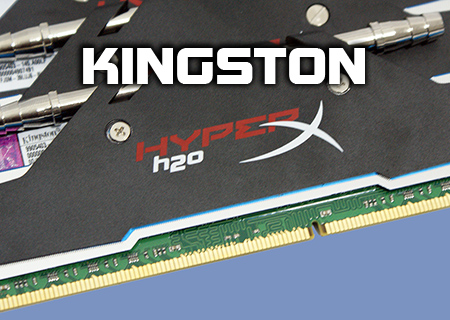Kingston H20 6GB 2000MHz DDR3 Review
Test Setup
Intel Core i7 950 @ 3.2GHz and 4GHz
6GB Kingston H20 DDR3
ASUS Rampage 3 Extreme
Corsair AX1200w
Windows 7 Ultimate 64 Bit
Prolimatech Armageddon with Arctic MX-3
ATI HD5870
Installation
The main point in purchasing a factory water-cooled RAM kit is the ease of installation. Most of us want a reasonably plug and play solution even with water-cooling. The days of all modifications being scratch built are long gone.
It’s with some trepidation that we approached the Kingston H20 because the horizontal pipe rather than the use of vertical barbs seemed counter-intuitive and so it proved when it came time to install.
Apart from the fact the barbs are 6mm and so will require some form of size transfer or an entirely separate loop, the reality is that the choice of horizontal horizontal barbs makes it almost impossible to install the loop without either forming the tube at right-angles, something we all know tubing doesn’t do, or using a variety of hardware to achieve the same effect.
The other solution could be to move the graphics card to another slot but that’s far from ideal in a single GPU PC, and impossible in a SLI/Crossfire setup.
The reality is that a company the size of Kingston really shouldn’t be making such elemental mistakes as this, especially given the quality of their air-cooled products and heat-sinks.
Overclocking
We’d assume that if you’re planning to overclock you’d want a water-cooled RAM kit to help get rid of the heat. The thing is that the Kingston just doesn’t really produce any. Throughout our testing, on air because of the installation issues, we didn’t see the temperatures rise above 41°C. So this isn’t exactly a burning hot kit.
So with heat not being an issue we’d expect great things from the people who brought us the incredible HyperX T1.
Great things aren’t forthcoming though. Using the XMP profile we have 9-10-9-27-2T @ 1.65v. Doesn’t leave us much wiggle room because to get extra speed you need to slacken timings, and let’s be honest who’d want to slacken these timings any more?
One thing we do have to point out is that the XMP also defaults the QPI to 1.7v, which is a stupidly high especially on modern i7 chips. So high is it that our i7-950 on the Rampage III Extreme wouldn’t even POST, so you have to manually lower the QPI just to get the system up and running. This will surely lead to swathes of needless RMAs from people who don’t know any better.
Isn’t the point of XMP Profiles to allow anyone to obtain the rated speed regardless of knowledge? If so then shouldn’t it be a sensible safe profile by default and then allow tweaking upwards if people are willing to do so? Disappointing.








